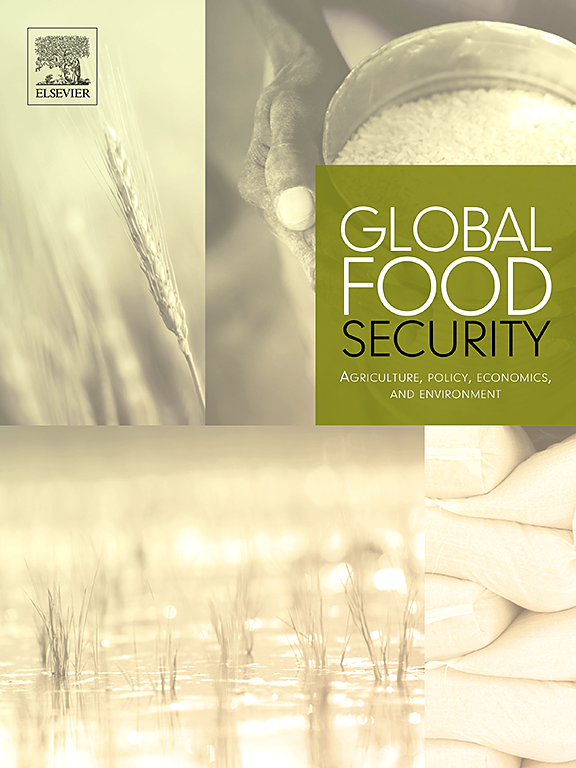Seeing famines: An exploration of the spatial dimensions of severe hunger crises
IF 9.6
1区 经济学
Q1 FOOD SCIENCE & TECHNOLOGY
Global Food Security-Agriculture Policy Economics and Environment
Pub Date : 2025-09-01
DOI:10.1016/j.gfs.2025.100878
引用次数: 0
Abstract
Famines can take various spatial forms, from sieges of single villages to transcontinental crises. Yet there has been little systematic study and conceptualization of their spatial dimensions, leading to confusion about where they are happening or will likely happen at a time of heightened risk globally. This paper helps to address this gap. It proposes that famines occur either in geographically wide-ranging ‘clusters’ of crises sharing common drivers or as stand-alone ‘singulars’ contained in delimited areas. It then makes a series of distinctions within these broader categories, classifying crises on a spectrum from closed to open, providing a vocabulary for describing spatial elements, and identifying a typology of common profiles. It applies the terminology and typology to a range of historical and contemporary crises. While recognizing the fundamental importance of political factors in causation, as well as some of the challenges in applying this approach, the paper argues that a clearer understanding of the spatial dimensions and logic of these crises can improve attempts to identify, respond to, and prevent famines in the future.
看到饥荒:对严重饥饿危机的空间维度的探索
饥荒可以以不同的空间形式出现,从单个村庄的围困到跨大陆的危机。然而,对其空间维度的系统研究和概念化很少,导致在全球风险增加的时候,它们正在发生或可能发生的地方感到困惑。本文有助于解决这一差距。它提出,饥荒要么发生在地理上广泛的危机“集群”中,这些危机具有共同的驱动因素,要么发生在划定的区域中作为独立的“单一事件”。然后,它在这些更广泛的类别中进行了一系列区分,将危机从封闭到开放进行了分类,提供了描述空间元素的词汇表,并确定了常见概况的类型。它将术语和类型学应用于一系列历史和当代危机。虽然认识到政治因素在因果关系中的根本重要性,以及应用这一方法所面临的一些挑战,但本文认为,更清楚地了解这些危机的空间维度和逻辑,可以改善未来识别、应对和预防饥荒的努力。
本文章由计算机程序翻译,如有差异,请以英文原文为准。
求助全文
约1分钟内获得全文
求助全文
来源期刊

Global Food Security-Agriculture Policy Economics and Environment
FOOD SCIENCE & TECHNOLOGY-
CiteScore
20.90
自引率
3.40%
发文量
69
期刊介绍:
Global Food Security plays a vital role in addressing food security challenges from local to global levels. To secure food systems, it emphasizes multifaceted actions considering technological, biophysical, institutional, economic, social, and political factors. The goal is to foster food systems that meet nutritional needs, preserve the environment, support livelihoods, tackle climate change, and diminish inequalities. This journal serves as a platform for researchers, policymakers, and practitioners to access and engage with recent, diverse research and perspectives on achieving sustainable food security globally. It aspires to be an internationally recognized resource presenting cutting-edge insights in an accessible manner to a broad audience.
 求助内容:
求助内容: 应助结果提醒方式:
应助结果提醒方式:


